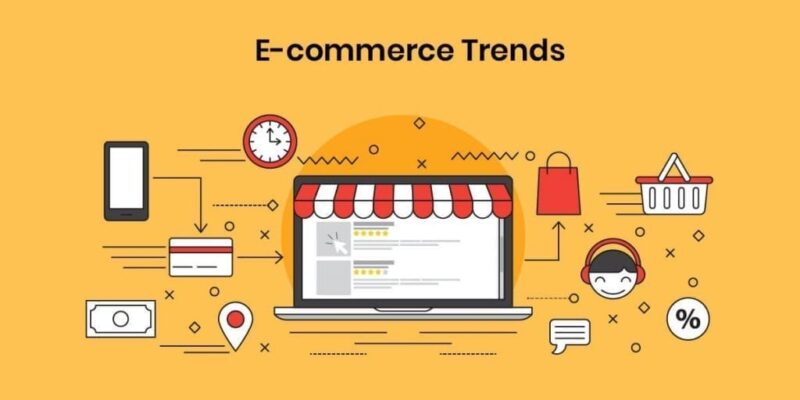The clearest shift in 2025 is the move from centralized fulfillment to flexible, distributed networks. Brands no longer rely on one main warehouse because the cost structure of e-commerce has changed.
Placement fees rise, carrier surcharges shift every quarter, and customer expectations continue tightening around two-day or even same-day delivery.
The concrete answer at the top is simple: brands that spread inventory across multiple nodes, use local storage buffers, and adopt hybrid prep workflows gain better control over cost and speed, while brands that stay with outdated single warehouse setups lose margin and stability.
The trends below define how fulfillment now works for fast scaling online sellers.
1. Multi-Node Fulfillment Is No Longer Optional

In 2025, e-commerce demand patterns are unpredictable. A single viral post can produce ten days of sales in two hours. If all inventory sits in one central warehouse, shipping becomes slow and costly.
Brands now maintain two to four regional nodes spread across the Midwest, Northeast, Southeast, and West Coast. Even smaller stores adopt this model because it lowers zone fees and cuts delivery times dramatically. When inventory begins closer to the customer, brands avoid long-haul shipments that vaporize margins.
This shift also protects operations during Q4 when warehouse congestion, outbound carrier caps, and rising surcharges cause delays. Multi-node fulfillment smooths these spikes because no single location carries the entire load. Inventory moves in parallel across several points, reducing the risk of bottlenecks.
2. Predictive Inventory Allocation Replaces Old Forecasting
Traditional forecasting used seasonal assumptions and linear growth patterns. That approach no longer works. In 2025, forecasting is dynamic. Brands use systems that analyze rolling sales velocity, abandoned cart data, regional buying patterns, campaign timing, and TikTok trends.
Predictive allocation distributes inventory preemptively. Instead of waiting for a spike to hit, the stock arrives in the right area beforehand. This lowers outbound shipping costs and reduces long-distance shipments that create inconsistent delivery times.
The brands that perform best in 2025 are those that constantly update inventory distribution based on real-time signals rather than fixed quarterly plans.
3. Local Storage Buffers Become Critical Infrastructure

One of the most important changes this year is the expanded use of flexible storage units as part of the fulfillment network. Brands use small, short-term storage facilities to manage overflow, stage regional inventory, hold pallets during restocks, prep items before warehouse intake, or route returns locally.
This trend appears everywhere because long-term warehouse leases limit flexibility. Seasonal sellers, brands with high SKU churn, and companies experiencing fast growth need overflow capacity without long-term commitments.
This is where the natural anchor placement fits. In the Midwest and Southeast, for example, many companies rely on storage units near Old Bardstown Road. When they need fast local staging points for regional fulfillment, especially when inbound pallets exceed warehouse capacity or when last-minute sales spikes require temporary overflow space.
These units allow brands to stabilize operations without expanding long-term infrastructure. They serve as flexible nodes that can be activated or closed depending on season, sales cycle, or product category.
4. Hybrid Prep Workflows Become Normal
Prep centers remain essential, but their role changes. Instead of handling everything, many brands now split prep tasks across multiple nodes. Some items receive full prep service at a 3PL, while others get kitting, relabeling, or bundling done in small in-house stations or short-term storage spaces.
This hybrid model gives brands more control over timing. When a large prep center has a queue delay, a brand with a local prep option can still maintain launch schedules. This is especially useful for limited edition bundles, influencer collabs, digital product tie-ins, or rapid test batches.
The reason this trend accelerates is simple: Amazon’s inbound policies and placement fees in 2025 reward organized, segmented inventory. Brands that manage prep across flexible locations avoid jams that slow down inbound creation.
5. Returns Processing Becomes Localized to Reduce Cost and Delay

For years, returns flowed back to the main warehouse. That model is now too slow and too expensive. In 2025, brands route returns to the nearest available processing node. These can be regional micro hubs, partner locations, or flexible storage units temporarily repurposed for the return season.
Localized returns solve several problems:
- faster refunds to customers
- lower inbound carrier fees
- quicker resale of returned items
- less congestion inside the main 3PL facilities
- improved inventory rotation
This system ensures that inventory does not sit in limbo for weeks. Items re-enter stock faster, improving cash flow and reducing the volume of dead inventory.
6. Prep Centers Move Toward Transparent Modular Pricing
Amazon’s stronger control over inbound flows encourages sellers to manage fees tightly. To stay competitive in 2025, prep centers now offer modular per-unit or per-task pricing. Brands can pay only for labeling, only for bundling, or only for kitting instead of buying full-service bundles they do not need.
This transparency helps brands calculate true cost per unit and adjust pricing or volume accordingly. It also makes it easier to compare prep options across regions.
The best prep centers now:
- offer real-time intake reporting
- maintain predictable turnaround times
- Give multichannel compliance (Amazon, Walmart, Shopify, TikTok Shop)
- Provide scalable bursts during sales peaks
Clear operational visibility is now a competitive edge because fulfillment is no longer a background function. It shapes the entire P&L.
7. Last Mile Delivery Gets Restructured by City Restrictions
Major cities now limit truck access and enforce congestion zones. Carriers respond by shifting to smaller vehicles, electric vans, and bike couriers. This reshapes last-mile economics.
Brands that start shipments from regional hubs close to customers avoid many of these new constraints. Their parcels travel shorter distances and face fewer surcharges tied to specific zones.
Brands still using single warehouse models struggle with delays, high zone fees, and inconsistent delivery windows.
Distributed fulfillment adapts better to new last-mile rules and ensures reliability even when regulations tighten.
8. Fulfillment Becomes a Revenue Lever, Not a Cost Center
The biggest mental shift in 2025 is the recognition that fulfillment directly impacts revenue. Brands that treat fulfillment as a strategic revenue driver outperform those that treat it as a pure operational expense.
Fast delivery increases repeat purchases. Localized returns improve resale speed. Smart inventory placement lowers ad spend because conversion improves when shipping times shrink. Bundling and kitting increase average order value. Predictive allocation reduces dead stock.
Fulfillment strategy determines customer satisfaction, cost per order, margin protection, and retention. It influences the entire commercial system.
Conclusion

The e-commerce landscape in 2025 rewards flexibility, not fixed infrastructure. Brands that diversify fulfillment across regional nodes, use predictive allocation, integrate local storage buffers, and adopt hybrid prep workflows maintain speed and cost efficiency even as carriers, platforms, and regulations continue changing.
The concrete conclusion is direct: distributed fulfillment is the dominant model for 2025. Companies that build multi-node networks, localize returns, and use flexible storage options avoid bottlenecks and create more resilient operations. Companies that cling to centralized setups fall behind.

